After my long journey from France to Cyprus I've been resting in a lovely marina and being further upgraded.
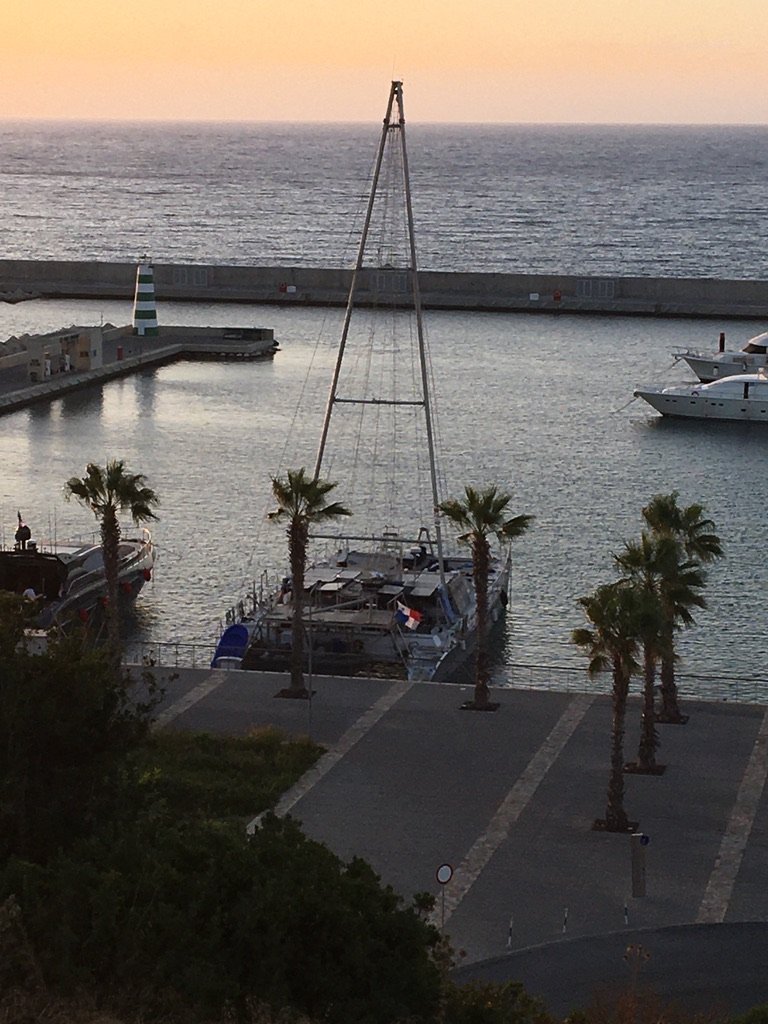
The story of my upgrades starts in May 2022 when I got a new captain.
My builders, Michel & Sophie, had always intended that I would be a self-sufficient Ark and had even given me the series name "Noe" (French for Noah) in my CE certification.
Original Electrical System
They put 6 x 270 watt solar panels on me to give me a respectable 1.62kW solar power generation.
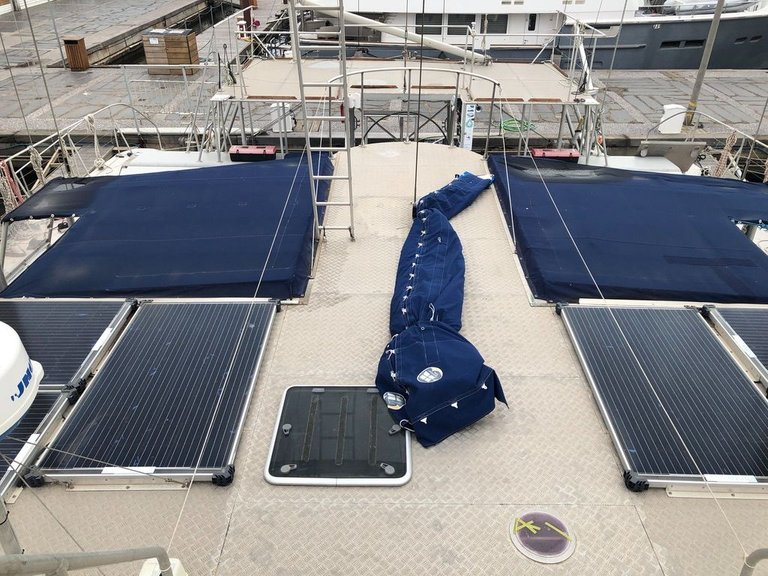
This was connected to two 12v lead acid battery banks (~700Ah) which provided, at best, 4.2kWh of usable storage capacity.
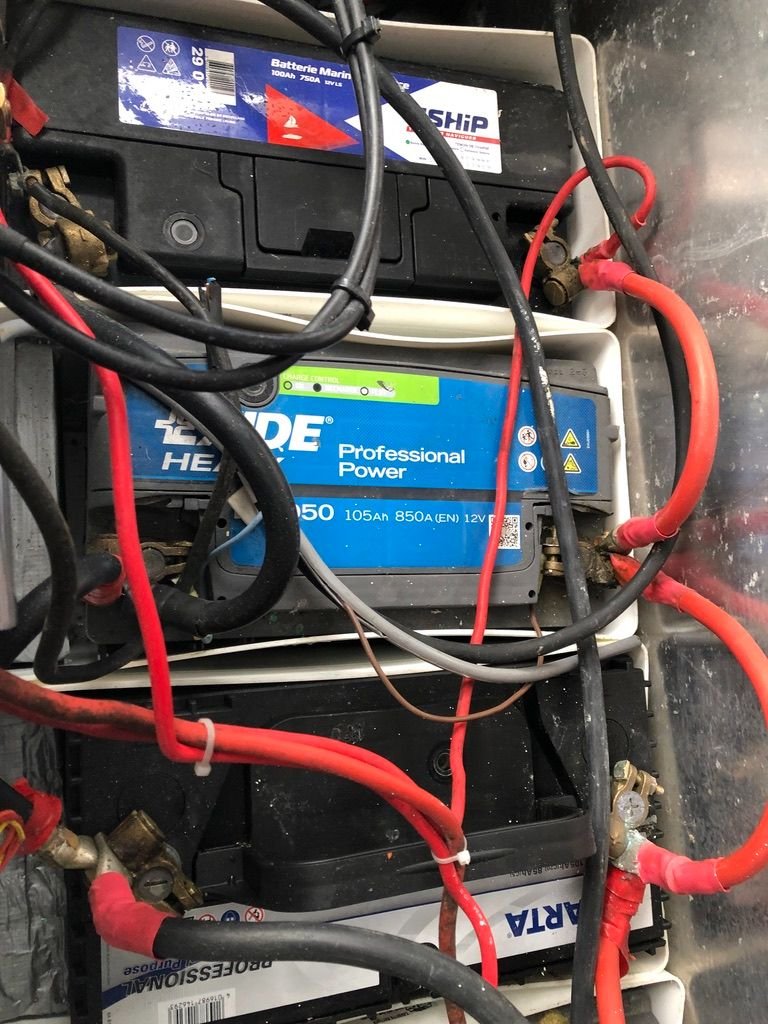
They were excellent sailors, very frugal and lived simply with few electrical devices (mainly just navigation instruments and lights) and no domestic electrical appliances other than a small DC marine fridge. So this was enough for them. They didn't even charge the batteries using the engines' alternators nor use shore power.
However my new captain had longer journeys with his large family in mind. The family needed a larger fridge, a freezer, induction cooktop, microwave oven, washing machine, dishwasher and large flatscreen TV - all the modern conveniences. Also the eastern Mediterranean is hotter and dryer than the south of France, so my excellent rain water collection system would need to be supplemented with a water maker and some air-conditioning would be needed.
All these needs called for a major upgrade of my electrical systems.
Luckily, my new captain knew a lot about solar panels and lithium batteries and designed a new electric system which could meet much larger power demands.
Lithium Batteries
The first step was to install new lithium batteries on me.
While large capacity high quality lithium batteries have a deserved reputation for being expensive, there is an alternative source of the very best batteries at one third of the normal price - electric vehicle (EV) accidents!
You see, with the large numbers of EVs on the roads, these cars are involved in accidents (just the same as petrol cars). When an electric car is written off, the lithium traction batteries (which are usually completely undamaged) cannot re-enter the normal automotive supply chains (because of silly regulations) and are available on the secondary market at very attractive prices (because of large supply and limited demand). People use them to build their own electric cars, power storage systems and sometimes for boats.
My batteries come from a VW ID.3 and are encased in a tough aluminium skin, just like me. They came from EV Shop EU.

These batteries are the much more energy dense Lithium Ion (Lion), rather than the safer Lithium Iron Phosphate (LiFePo4) batteries often favoured by boaters. If I was made of highly flammable glue and glass fibre (aka fibreglass) I would also want this less flammable option.
However as I am made of marine grade 5-8mm aluminium, my hull and superstructure is both non-flammable and acts as a big heat-sink into the water. By laying these aluminium encased batteries directly on my aluminium structure they get the benefit of passive heat sinking and should never encounter the thermal runaway situation that can cause lithium battery fires.
Even in the worse case, the maximum temperature of a lithium battery fire is well below the melting point of aluminium and the batteries are both themselves aluminium encased and isolated from everything else in their own completely enclosed aluminium compartment.
The big advantage, apart from price, is that these batteries have the best energy density of any commercially available battery. They have ten times the energy density of lead acid (and ten times the lifespan) and twice the energy density of LiFEPO4. Each of them has a usable capacity of 6.85kWh in a 32kg package at a nominal voltage of 29.6v.
I have two for my "house" needs (13.7kWh @ 29.6v in a 1S2P configuration) and six (41.1kWh @ 59.2v in a 3S2P configuration) reserved for my future electric propulsion system.
I always need to watch my weight as if I get too heavy I have more drag and my performance is negatively affected. By removing all my lead-acid house batteries and replacing with these I get ten times the power and ten times the life for the same mass. They are literally 100 times better!
More Solar Panels
Michel and Sophie gave my new captain another seven identical solar panels to the ones I already had. These were progressively installed and brought online before and during my trip from France to take my solar power production capacity to an impressive 3.5kW. This is the typical size of Solar PV system installed on a medium sized house these days.
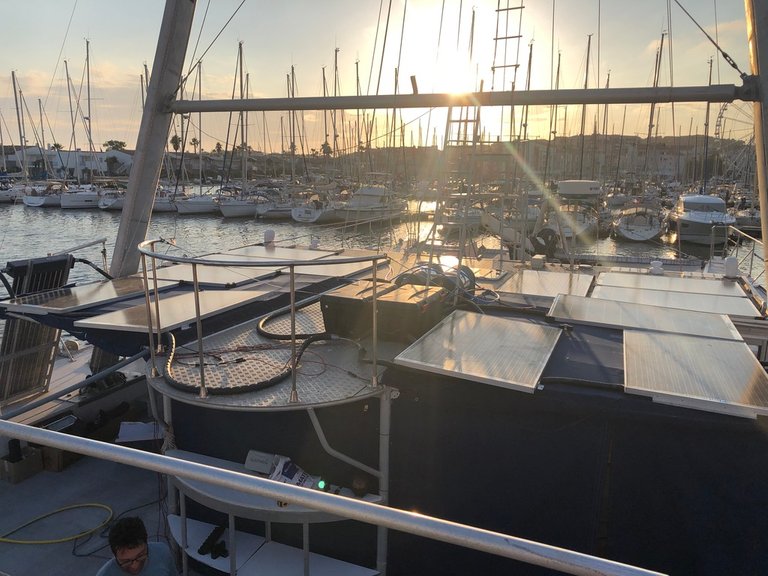
Victron Power Electronics - Bringing it all together
Solar panels and batteries are the core components but you also need a number of other critical pieces of power electronics to create a fully off-grid power system:
- solar charge controllers to connect the PV panels to the batteries;
- DC to AC inverters to provide 220v AC power from the batteries and solar panels;
- DC to DC converters to convert the ~30v battery voltage to suit existing 12v and 24v systems;
- a management system so you can see what is going on and control it; and
- a battery management system to protect the batteries.
Victron produce an excellent range of such equipment which is generally considered to the the best and I was happy to have this equipment installed on me.
Here is my 3000w 24v Phoenix DC to AC inverter, one of my solar charge controllers and the Cerbo GX control unit. A second 3000w Inverter (48v) which will run off the ~60v propulsion battery is in the box awaiting installation.
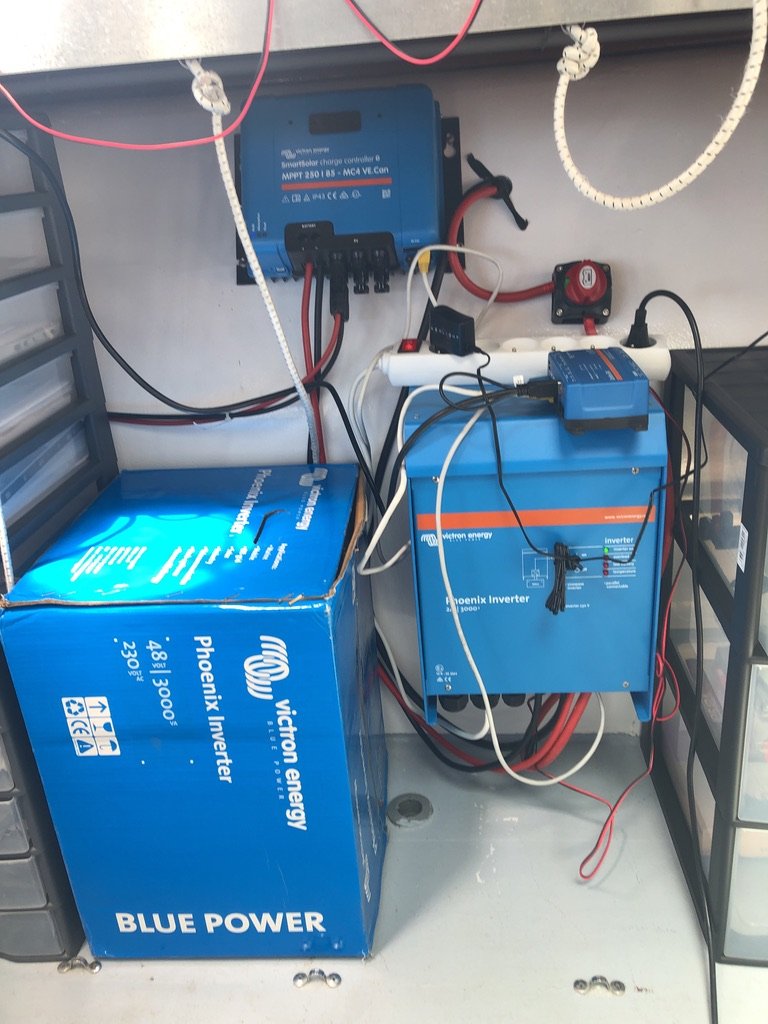
Here is the Cerbo GX touch screen which shows what is going on. It is really cute.
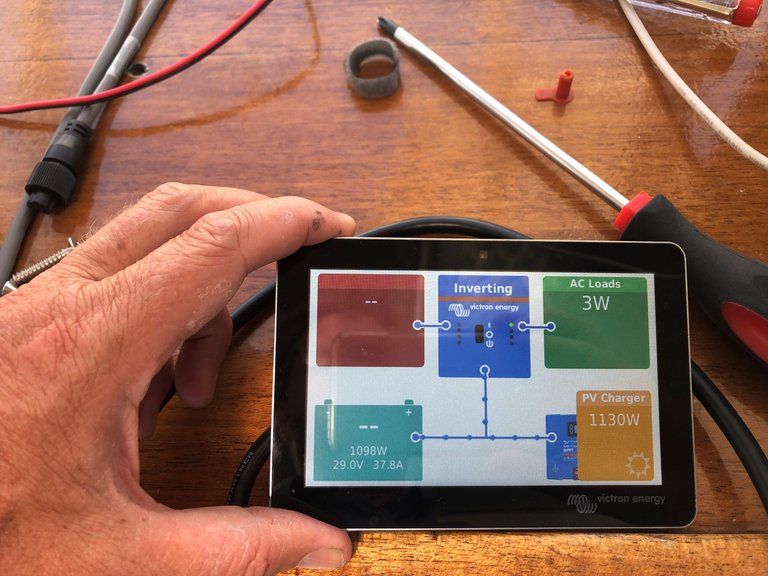
Here is another solar charge controller and a 24v-12v DC to DC converter which replaced the ugly 12v lead acid batteries shown in a photo above and provide a much more stable and reliable 14v feed to all my existing 12v devices.
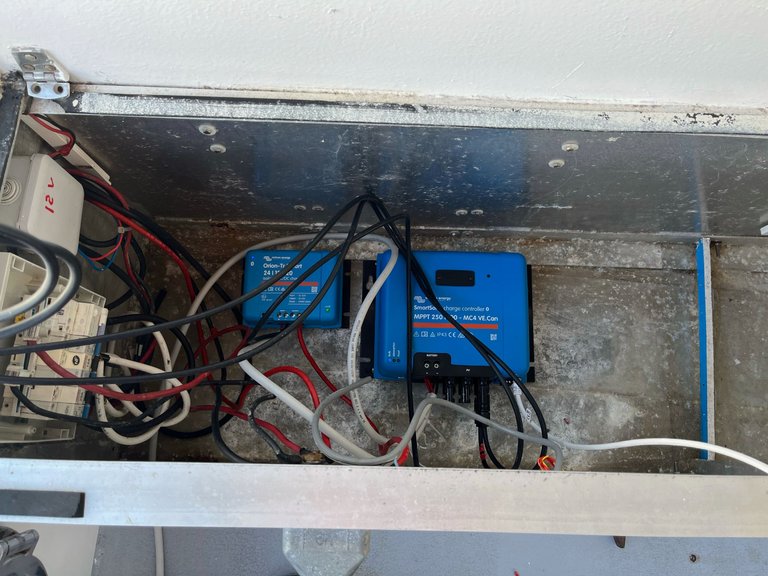
You might have noted that I am using 24v Victron equipment with batteries that are nominally 29.6v. This is within the operating range of the Victron 24v equipment that can actually take up to 33.2v and the solar charge controllers can be adjusted (by iPhone app) to not charge the batteries above that level.
Proof of the Pudding
Even though this solar power system was not fully installed before I set out upon my trans-Med journey, it provided enough power for between 4 and 11 people to live comfortably upon me for more than two months and 2500 Nm of sailing. This included running a water maker completely off solar power (most boats need to run a diesel generator or engine), 1-2 hours of air-conditioning per day and all the domestic appliances mentioned above.
My captain has detailed plans to install a lot more solar panels and electric propulsion, which will also allow all day air-conditioning. But this is for a future post.
My next post will deal with major plumbing and hot water upgrades.





